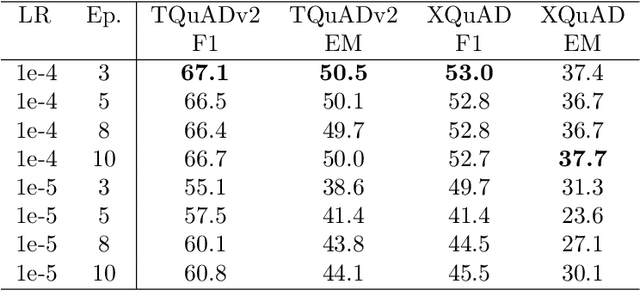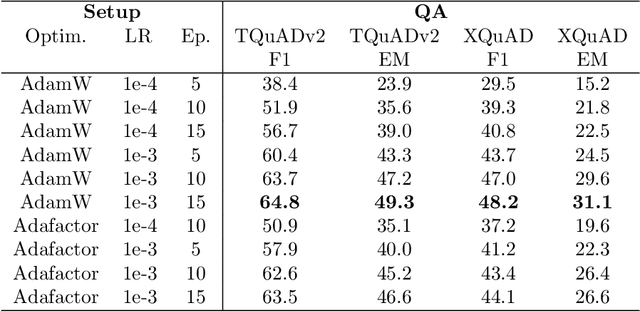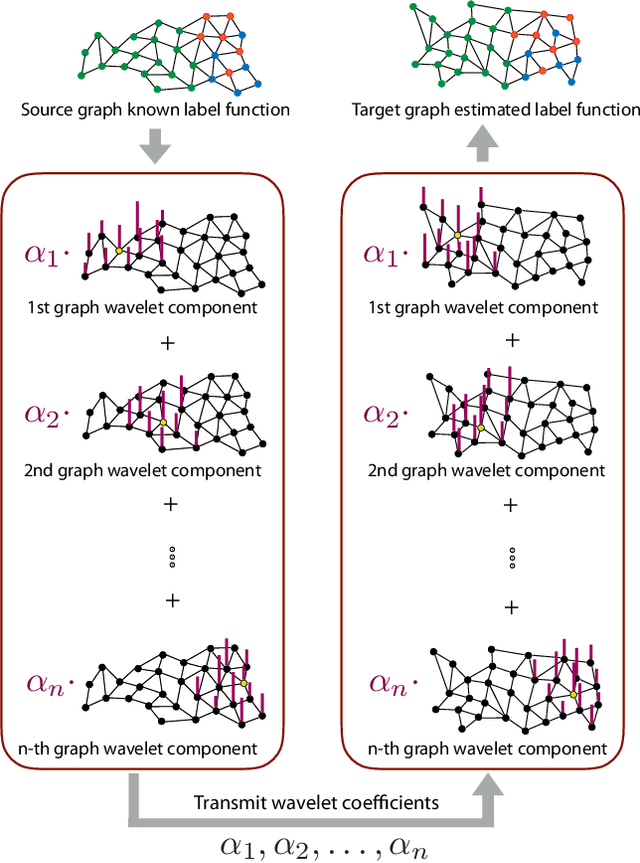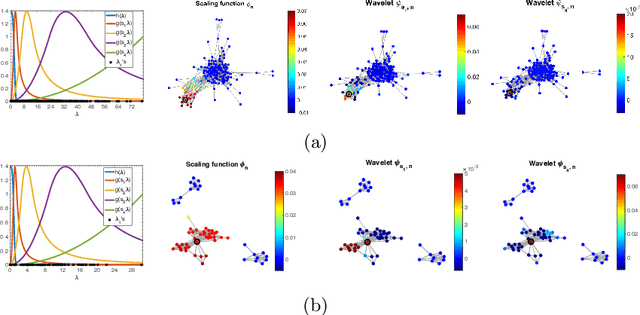Cemil Cengiz
Automated question generation and question answering from Turkish texts using text-to-text transformers
Nov 21, 2021



Abstract:While exam-style questions are a fundamental educational tool serving a variety of purposes, manual construction of questions is a complex process that requires training, experience and resources. To reduce the expenses associated with the manual construction of questions and to satisfy the need for a continuous supply of new questions, automatic question generation (QG) techniques can be utilized. However, compared to automatic question answering (QA), QG is a more challenging task. In this work, we fine-tune a multilingual T5 (mT5) transformer in a multi-task setting for QA, QG and answer extraction tasks using a Turkish QA dataset. To the best of our knowledge, this is the first academic work that attempts to perform automated text-to-text question generation from Turkish texts. Evaluation results show that the proposed multi-task setting achieves state-of-the-art Turkish question answering and question generation performance over TQuADv1, TQuADv2 datasets and XQuAD Turkish split. The source code and pre-trained models are available at https://github.com/obss/turkish-question-generation.
Graph Domain Adaptation with Localized Graph Signal Representations
Nov 07, 2019



Abstract:In this paper we propose a domain adaptation algorithm designed for graph domains. Given a source graph with many labeled nodes and a target graph with few or no labeled nodes, we aim to estimate the target labels by making use of the similarity between the characteristics of the variation of the label functions on the two graphs. Our assumption about the source and the target domains is that the local behaviour of the label function, such as its spread and speed of variation on the graph, bears resemblance between the two graphs. We estimate the unknown target labels by solving an optimization problem where the label information is transferred from the source graph to the target graph based on the prior that the projections of the label functions onto localized graph bases be similar between the source and the target graphs. In order to efficiently capture the local variation of the label functions on the graphs, spectral graph wavelets are used as the graph bases. Experimentation on various data sets shows that the proposed method yields quite satisfactory classification accuracy compared to reference domain adaptation methods.
 Add to Chrome
Add to Chrome Add to Firefox
Add to Firefox Add to Edge
Add to Edge